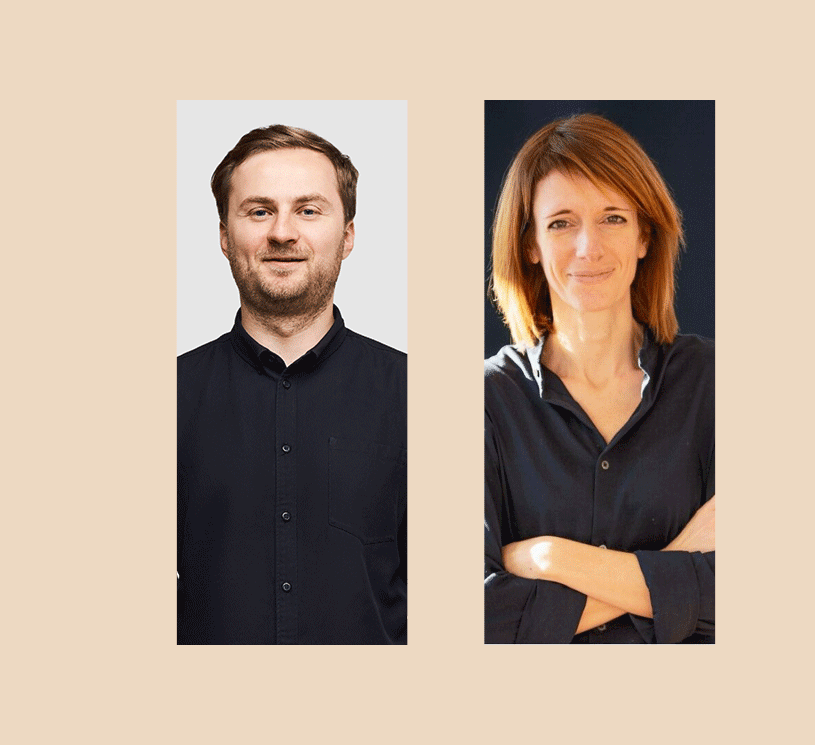When sustainable investing meets branding – part 1
Share this article

Today we present an interesting conversation between Krzysztof Langer, CEO at Admind Branding & Communications, and Kim Marty, a Member of the Board of Directors at ESGTI. It is an investment company focusing on early-stage companies with potentially high-impact solutions or unique breakthrough technology as a driver for growth. Why is sustainable investing becoming a trend? And how can branding help start-ups and early-stage companies grow?
Kim: In short, ESGTI was formed in 2020, and the ethos behind it was that there’s a way to do business that is sustainable and, let’s say, for the human good. We aim to drive investments which are providing equal returns for investors and better returns for the planet. ESGTI stands for Environmental, Social, and Governance Technology Investments. We are a listed investment company, and we use ESG principles to invest in companies that have interesting technologies or technological advantages. That’s kind of the internal promise behind ESGTI. If you look at the external environment, there’s also a huge call from today’s investors who seek a positive impact and want to enter this space, but it’s not always easy to do so via smaller companies. So, we like to think of ourselves as democratizing impact investing because we’re really trying to give access to the market to investors for start-ups or early-stage companies.
Krzysztof: I know it’s not always black and white, but we get a lot of questions about what comes first in terms of, as you said, ethos? Is it mainly about the brand values or is it also a bit of a pragmatic choice because it adds the direction that in the future may generate a higher return on investment?
Kim: The nice thing about ESGTI is that it was a series of companies that had grown organically. The majority of them were very much based on the sustainable approach and we collectively put them together. Of course, now we’re in a position where we have a collective portfolio, which we ask investors to invest in as a whole. Now it is a combination of focusing on an original need or desire to create a sustainable enterprise, balanced with the need to have portfolio diversity and consider risk management. So, I would say now it’s a combination of both.
Kim: We created our portfolio with a thematic approach, so we have three pillars of what we like to call “life’s fundamentals”. So, it’s about food security, it’s about access to health care, and it’s about addressing some of the issues within climate change. In business terms, this means investing in these three core areas. The first is sustainable agriculture and within that Agri-Tech, the second is Life Science and within that, specifically Bio-Tech and Med-Tech, and the third is clean technology and energy solutions, specifically Clean-Tech. There’s always this overarching element of technology, but we try to focus on three pillars that cover three very distinct areas. That means that we have a breadth of sectors, themes, and different risk profiles for our investors. Our idea is to have a portfolio which has a level of mitigated risk, but also allows us to focus on our next investment and answer the questions: Does this fit with our ethos and thematic approach?
Kim: It’s interesting, because my question would be: why shouldn’t they? I’ve just finished reading the Intergovernmental Panel on Climate Change report that came out recently, which shows a very alarming picture of climate change. And it’s not news. I mean, obviously, this is on the radar of many governments and businesses, but we’re really entering a period where the damage that we have done is irreversible. It makes absolute sense now to invest in alternative sustainable solutions. And I think from a public opinion point of view, this is very much present. We tend to look at also things like the European Green Deal which emerged at the end of 2019. We keep an eye on pledges made by governments during events such as COP-26. So, there’s a very present public awareness, but also very big stakes. Governments need to shift their approaches. In order to provide scalable solutions, they will need the private sector to help them.
The interesting thing here is that we talk a lot about long-term solutions, so let’s say, Clean Energy by 2030, zero carbon emission, etc. But we also need short-term solutions that can translate our current system to something more green, more sustainable, and more efficient. I think both have equal value. You have the long-term revolution, and you have the short-term evolution. Technology plays a massive part in this because you can make current solutions very much more efficient and sustainable. So, apart from the obvious things such as corporate reputation and market demand, there’s now a basic hygiene need to introduce sustainability into business models.
Krzysztof: Is it a major view when it comes to business and investors, or can you see that there are also other opinions too?
Kim: It is, of course, my personal point of view. Unfortunately, there’s a lot of greenwashing around. It’s very difficult to distinguish between a real intent to build a fully sustainable business versus, let’s say, more profit-driven businesses which have sustainability as kind of a nice to have. We need to be profitable in order to continue to operate but we also want to do it in a clean way by creating solutions that could help, even if it’s a drop in the ocean.
Krzysztof: It’s interesting because we also as a branding agency work with companies that have a true purpose that is based on values and that takes actions to fulfil it. But how to assess if they are truly committed to it? Is it about the right intention? About what drives you first? It’s also difficult for us to assess if there is a balance between sustainability or social impact in general and profit-driven business.
Kim: The nice thing today is that there are many funds which, for example, really focus on many different types of sustainable solutions. I think that they have very much an ethos of working only with ESG-friendly companies.
ESG factors in isolation typically don’t measure a company’s impact on the Earth and society, they gauge the opposite: the potential impact of the world on the company and its shareholders. The next level would be impact investing where we want to evaluate what impact a company has on its external environment.
But I have to say that we’ve also come across many companies that don’t have the means to do a fully-fledged ESG or Impact certification, but it doesn’t mean that they’re not doing a good job. I think this is where we need to be sensitive even from a communications point of view or from a business point of view to find the investments which really want to do a good job and have the rights assets, even if they don’t have the means today to shout it from the mountains, you know?
Krzysztof: So, it’s not so black and white again and the assessment should be made by a particular case?
Kim: Absolutely.
Kim: It’s difficult. I mean, I can only answer from my point of view. In ESGTI we don’t ask investors to invest in sustainability. We ask them to invest in our technological assets and those assets themselves are designed to operate in a sustainable way. In this sense, we’re not asking investors to invest differently than before – they’re investing in a purpose, a company, and its assets. For example, our due diligence process that screen and prioritize investments is quite traditional, looking at a traditional business model but on top of that, we can now use things like ESG frameworks which allow us to assess not just sustainability, but also things like social inclusion, corporate reputation, the internal culture or values behind the company.
These things have actually been around for a while, but it’s about putting them a little bit more at the forefront. I think it’s important to remind ourselves that sustainability isn’t new. Before there were parts of it found in corporate social responsibility, and previously in environmental health and safety. This has been around for almost 30 years. What’s different is that we have a greater need today, coupled with huge traction in technology that allows us to address some of the issues in a different and scalable way. And we have just a greater awareness, not only amongst businesses but also amongst governments and the public. That’s why the worth of sustainable investment has really come a long way in the last few years.
Do you find the topic of conscious branding interesting? Read the second part of the conversation, from which you’ll learn how early-stage companies are approaching branding and marketing efforts.

